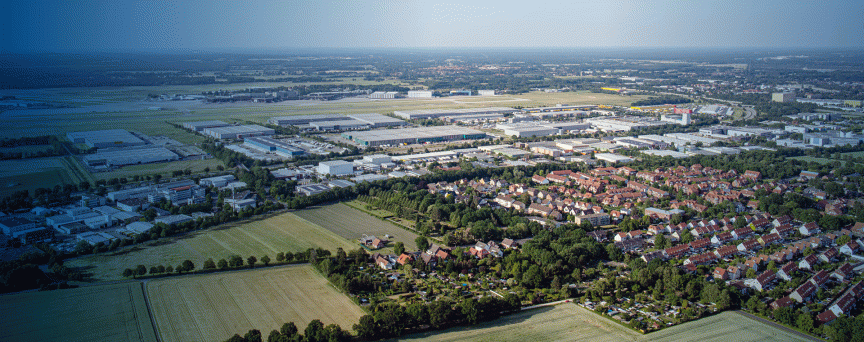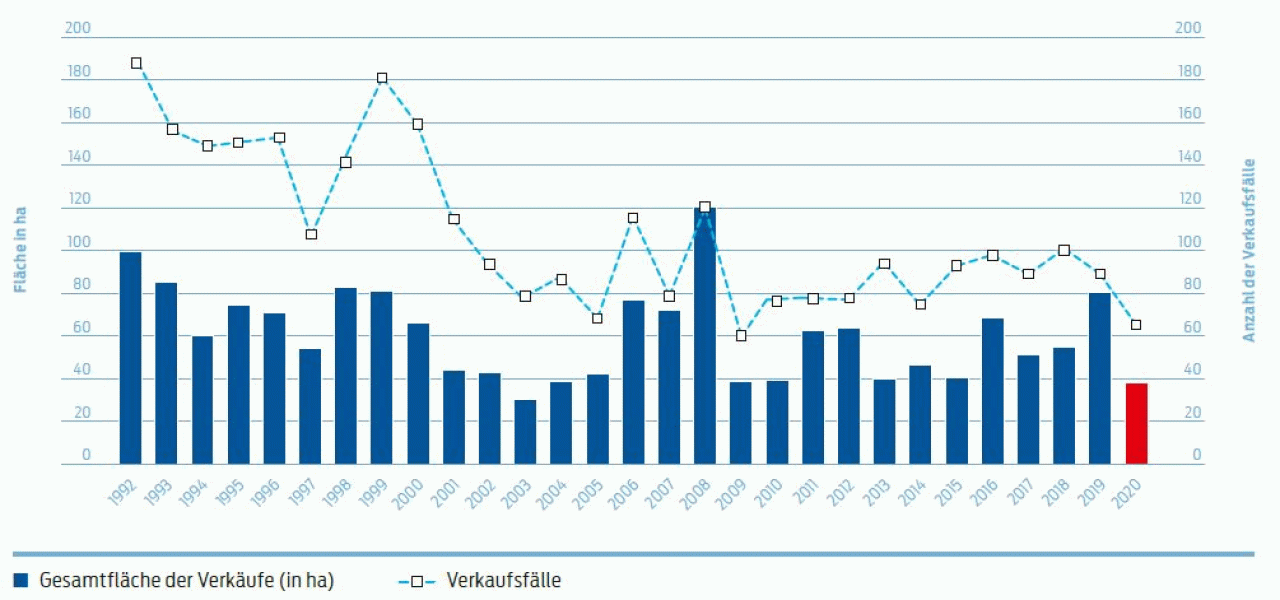Supply of commercial space down by a fifth in five years
 © Dirk Laubner
© Dirk Laubner There are currently 459 hectares of land with a legally binding development plan (B-Plan) available for commercial development in the Hannover Region - compared to 490 hectares in the previous year.
This is the result of the current commercial space monitoring, which the Hannover Region publishes annually.
"Since 2016, the amount of available commercial space with a development plan has fallen continuously by almost 20 percent,"says Alexander Skubowius, Head of the Region's Economic and Employment Promotion Department."There is currently hardly any immediately marketable space for SMEs and industry, especially in the immediate vicinity of the freeway."
Only 23.5 hectares are currently available here. In comparison: in 2020, 60 hectares of immediately developable land was still available along the highway. It is also critical that the potential for commercial space has already been exhausted in some municipalities or that longer time windows for land-use planning and the development of new ones are to be expected.

The turnover of commercial space sold also declined in 2020: At 38 hectares, it was far below the previous year's take-up of 80.5 hectares. The weak take-up of space in 2020 is likely to be largely due to companies postponing investment decisions in light of the coronavirus pandemic.
However, demand for space in the immediate vicinity of the freeway, as well as for expansion space at the same location or in the same municipality, remained comparatively high in the crisis year 2020.
Only around 15 percent of total take-up was accounted for by space located less than 2 kilometers from the junction. This is the lowest figure since 2014. Good public transport connections have also become increasingly important.
"In the future, we will not only need suitable sites with very good transport connections for our manufacturing companies and their service providers, but we will also have to look for locations close to the S-Bahn or light rail," says Ulf-Birger Franz, Head of Economic Affairs for the Hannover Region.
"We will also have to focus on brownfield sites and existing commercial locations if we want to attract innovative technology-oriented manufacturers and service providers. To do this, we need to create locations with urban development quality that also take account of climate protection and sustainability requirements. "
The Hannover Region has therefore amended its funding guidelines for commercial space development (REGIP) since February of this year by only funding projects that take into account criteria for sustainable or climate-friendly space development. These include, for example, integration into neighboring biotopes, unsealing of land, reactivation of brownfield sites, rainwater infiltration, green roofs, renewable energy supply or sustainable mobility options.
Press contact
Christoph Borschel
Press Spokesman
Tel. 0511 616- 22260 - Mobile 0162 366 15 47
